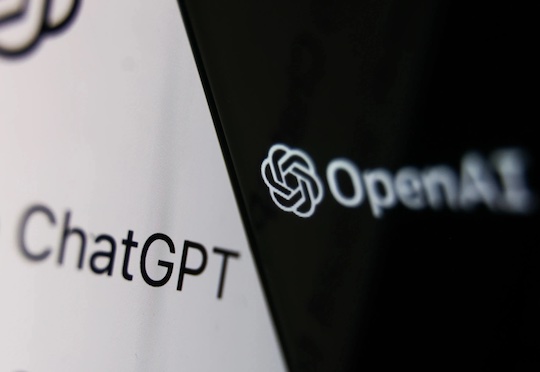
AI development has accelerated with phenomenal speed recently, and tech giants like Google, OpenAI, and Anthropic, along with a host of emerging startups, are churning out powerful new models at breakneck speed.
Keeping up with the latest releases may feel pretty overwhelming, mainly when AI performance is often marketed on technical grounds that may not measure how the system will serve in real-life applications.
Indeed, the fastest-growing field development in AI has been noted in 2025; for instance, cutting-edge models produced by OpenAI and Google are equivalent to prototypes developed by Chinese startups. Thus, advances have had a far-reaching impact, cutting across artificial intelligence realms such as reasoning, efficiency, and real-world applicability.
AI Models Released in 2025
OpenAI’s GPT-4.5 ‘Orion’
OpenAI’s latest flagship model, Orion, has enhanced social and world knowledge, but it lags in reasoning tasks behind some of the more recently developed models. Orion is accessible via OpenAI’s subscription plan, which costs $200 per month.
Claude Sonnet 3.7
Anthropic has launched the first hybrid reasoning AI, allowing for quick responses and deeper analytical abilities. Users can control the time the model spends reasoning. All Claude users can access Sonnet 3.7 via a $20/month Pro plan for heavier use.
xAI’s Grok 3
Grok 3, an old math, science & code expert, has been designed by Mr. Musk’s xAI. Under pressure by critics alleging a left-leaning political bias in its predecessor, Mr. Musk promised to take a more neutral stance with Grok 3. An X Premium subscription costing $50 per month is required for Grok 3.
OpenAI o3-mini
Cost-effective reasoning model for STEM task nodes, including coding, mathematics, and science applications. It might not be OpenAI’s most gifted model, but it makes the “cut” for cost-centered users grouped under specific needs. It is free for use limited, with a paid tier for heavy users.
OpenAI Deep Research
The model is research-oriented to provide deep, citation-rich insights into a variety of topics. However, like all other AI models, it does still have the propensity to hallucinate once in a while. It is exclusive to OpenAI’s $200-a-month Pro subscription.
Mistral Le Chat
Mistral’s multimodal AI assistant offers speedy responses as well as the premium model that provides the most up-to-date news provided from AFP. Tests have shown that while performance is quite impressive, there are however some issues of accuracy relative to ChatGPT.
OpenAI Operator
Focused on serving a virtual personal assistant, Operator is able to perform grocery shopping independently. However, it very early in the testing result showed erratic decision making, such as overpaying for simple goods. Operator could be availed of with a subscription of $200 per month for ChatGPT Pro.
Google Gemini 2.0 Pro Experimental
Gemini 2.0 Pro can manage large scale documents and complex reasoning with a huge context window of 2 million tokens. It is offered via the Google One AI Premium plan for $19.99 each month.
China AI Startups Making Waves
There has been fierce competition among China’s AI startups with interest in local alternatives, sparked by the launch of ChatGPT in 2022.
Once dominated by the likes of Alibaba and ByteDance, that line too has been attacked with small AI startups breaking the rank and keeping themselves afloat.
DeepSeek R2
Following the momentum created by DeepSeek R1, the Chinese model now dazzles with its reasoning and coding skills. DeepSeek R2 continues to be open-source and widely used across academia and the industry as well.
DeepSeek has actually brought about big changes in the efficiency of the AI models through distilling-an art by which smaller and cheaper models are trained on data generated from larger models. This method has raised eyebrows around Silicon Valley, with reports claiming that OpenAI keeps an eye on accounts suspected of distilling their models for training competitors.
iFlyTek Spark 2.0
The Spark 2.0 model for multilingual processing and real-time speech recognition is released by iFlyTek, an AI company from China. The Spark 2.0 is steadily gaining popularity in academia and business applications.
Zhipu AI GLM-4
Developed by Zhipu AI, GLM-4 is a very sophisticated AI model designed to support intricate reasoning and enterprise applications. Currently, several Chinese companies are intending to use this model, as they are searching for “local” replacements for the OpenAI models.
Moonshot AI
Moonshot AI is one of the fastest-growing AI start-ups in China. A chatbot was released by the company that can deal with long-form conversations with better context retention. The model is purportedly an alternative to GPT-4 found in Open AI, in terms of fluency and coherence.
AI Models Released in 2024
DeepSeek R1
This Chinese-developed AI set the waves rolling in Silicon Valley. This is due to the fact that it is open-source and has strong coding and math abilities. Unfortunately, the AI has been subject to scrutiny owing to fears over the Chinese government censorship of its potential data sharing issues.
Gemini Deep Research
While perfect for quick research, the tool lacks peer-reviewed depth, summarizing Google results with citations. It requires a Google One AI Premium subscription, priced at $19.99 per month.
Meta Llama 3.3 70B
The open-source model developed by Meta offers advantages in terms of math, instruction-following, and knowledge of the world, thus more or less being a cheaper alternative to proprietary models.
OpenAI Sora
This model for video generation generates scenes from text input, although it can render full video sequences and fails in physics consistency. Sora is available for OpenAI’s paid ChatGPT tier starting at $20 a month.
Alibaba Qwen QwQ-32B-Preview
The Qwen QwQ-32B is a rival of OpenAI’s GPT-4 model, specializing in mathematics and programming. But it falters when it comes to common-sense reasoning, and it is also subject to the censorship of the Chinese government. Nonetheless, it is free and open source.
Anthropic’s Computer Use
The artificial intelligence model is capable of performing direct tasks for the user, such as booking flights or writing programs, directly on the user’s computer. It is still under beta and priced at $0.80 per million input tokens and $4 per million output tokens.
The Future of AI Models
As AI continues to improve, new models will expand the horizons of reasoning, creativity, and automation. Yet, the latest and greatest models will exhibit limitations in bias and accuracy of reasoning costs for accessibility. The new twists introduced by distillation techniques open new doors and create more challenges by making AI more accessible while disrupting established revenue models.
This guide will be continuously updated with new innovations to help users keep up with the latest and help them make reasoned decisions about the latest developments in AI.
Follow us on WhatsApp, Telegram, Twitter, and Facebook, or subscribe to our weekly newsletter to ensure you don’t miss out on any future updates. Send tips to editorial@techtrendsmedia.co.ke




